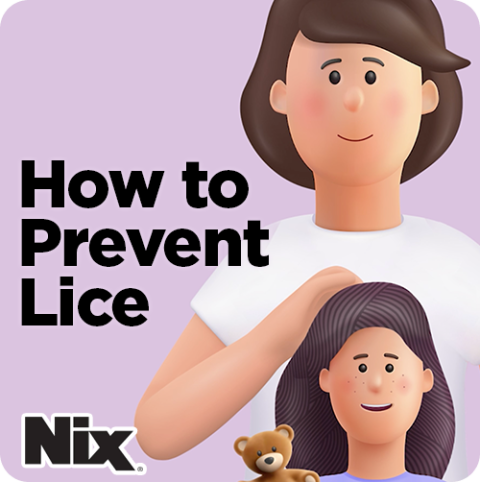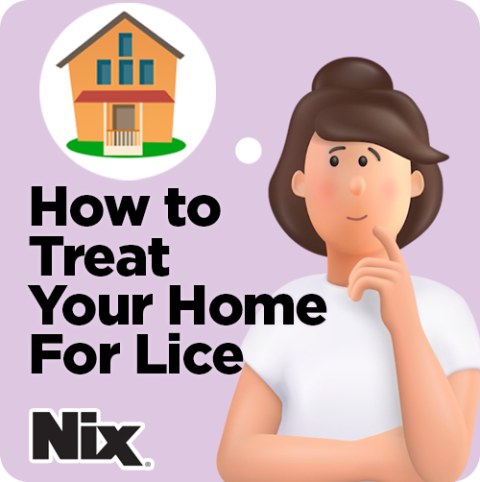How to Prevent Lice?
No parent wants to learn of an outbreak of lice at their child’s school or camp. Lice infestation travels quickly. And even if your child has already been treated for lice, he or she may easily become reinfested through contact with another infested person. This means going through another round of treatment.
Preventing Reinfestation
Reinfestation — or getting lice again after already being treated for it — is a real concern. No one is immune to head lice. If lice treatment is not followed properly, personal belongings such as hats or brushes are shared, or steps aren’t taken to rid your home of lice, they can come back and your child can get infested again.
You may have also heard that Nix® has a residual effect. This means that some residual or lingering activity of Nix® remains on the hair for up to two weeks, even with regular shampooing. This residual activity allows Nix® to kill lice — including baby lice as they hatch — and protect against lice reinfestation for up to 14 days. Products with longer residual effects tend to be more effective in killing newly hatched lice eggs.1 Other lice treatments that do not have the residual effect that Nix® does often require more than one application to ensure that newly hatched lice eggs are killed. Nix®, on the other hand, kills lice and their eggs usually with a single application
Reference:
1. Mazurek CM, Lee NP. How to manage head lice. West J Med. 2000 May; 172(5): 342–345.
Follow these tips to prevent a lice outbreak:
-
Tip #1: Check Hair
- Continue to check head nightly for 7-10 day after hearing about a close contact with head lice or a recent infestation
- The Nix® Premium Metal 2-Sided Comb or Nix® Electronic Lice Comb can help spot check the head
-
Tip #2: Use Nix® Lice Prevention Daily Leave-In Spray
- When no lice are present, use Nix® Lice Prevention Spray every day before school or camp for long lasting protection or to protect the whole family when a family member has head lice
- Designed to repel lice, including superlice, through a blend of essential oils such as Rosemary, Citronella, and Lemongrass
- It even helps condition and detangle hair!
-
Tip #3: Avoid head-to-head contact
- The easiest way for lice to spread from one person to another is through direct contact
- Avoid activities in which your child's head could come into contact with another child’s (i.e. sports and playground activities, sleepovers, camp and simpler gestures such as hugging or leaning in close to talk to one another or to take a photo
-
Tip #4: Don't share clothing or personal items
-
Tip #5: Separate clothing
- Separating clothing is a simple step toward prevention that’s easy for kids to remember
- Teach your children to hang up their coats on separate hooks at school, rather than throwing them in a pile with other kids’ stuff. Although the risk of getting infested by lice in this manner is very small, head lice can survive a day or two after falling off a human host
-
Tip #6: Clean to control the spread
- Items that have come into contact with a person infested with head lice should be machine washed in hot water (130° F) and dried in the dryer on a high-heat setting (clothing, bed linens, and stuffed animals)
- Items that can’t be machine-washed should be dry-cleaned or sealed in a plastic bag and stored for 2 weeks
- Nix® Lice Killing Spray should be used for household items that are too large to wash or cannot be dry-cleaned (furniture cushions, mattresses, car seats, carpets)
- Combs and brushes that have been used by an infested person should be soaked in hot water for 5-10 minutes



